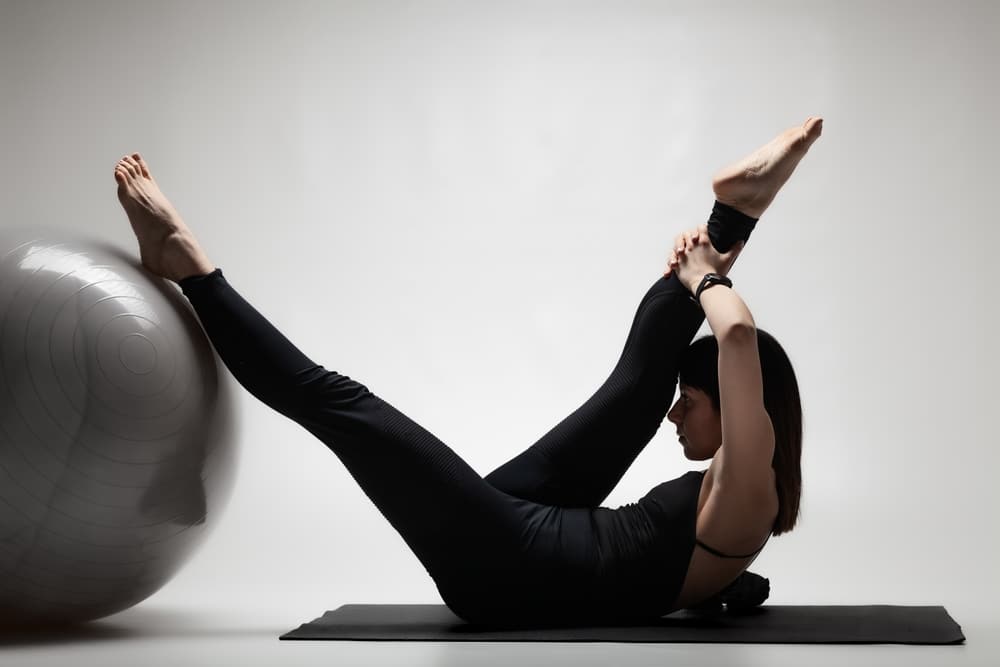Transform Your Posture and Balance with Classic Gym Exercises You Can Do Today
You might remember the carefree days of childhood when you would crab walk across the playground, giggling with friends. But this playful maneuver is more than just a nostalgic trip down memory lane; it’s a surprisingly effective workout that challenges your strength and coordination.
“The crab walk is an incredible full-body exercise with numerous benefits,” says Akane Nigro, Certified Personal Trainer at Life Time in Charlotte, North Carolina. It’s not just about moving around like a crab; this exercise can significantly improve your strength, coordination, posture, and overall fitness, giving you more than just fond memories.
If it’s been a while since you last attempted this fun movement, now’s the time to brush up on your technique. We’ve consulted fitness experts to break down the right way to do a crab walk, highlighting its benefits, the key muscle groups it engages, and essential tips to maximize your workout.
To master the crab walk, follow these steps provided by Nigro:
1. Begin seated on the ground with your knees bent and feet flat on the floor. Position your hands behind your hips, with your fingers facing outward.
2. Push down firmly through your hands and feet to lift your hips. Your body should form a straight line running from your head to your knees.
3. Engage your core muscles and start walking backward. Move your right hand and left foot simultaneously, followed by your left hand and right foot.
4. After a few backward steps, pivot and move forward in the same alternating pattern.
5. While you move, remember to keep your chest open and your shoulders relaxed—don’t let them hunch up around your ears!
Now, let’s talk about the benefits you’ll reap from incorporating the crab walk into your routine.
### Strengthening Muscles: What You’re Working
Engaging in a crab walk taps into a wide variety of muscle groups. Here’s what you can expect to activate during each session:
#### 1. Shoulders
As you bear the weight of your body, you engage and strengthen your deltoids and rotator cuff muscles. These muscles play a key role in shoulder stability and flexibility, making everyday tasks easier.
#### 2. Arms
Your triceps and biceps get a solid workout as they help to support your elevated body while you walk forward and backward. This helps tone your arms, contributing to a more well-rounded fitness regimen.
#### 3. Legs
Crab walking isn’t just about upper body strength. Your quadriceps, hamstrings, glutes, and calves are all in action too. Together, these muscles enable the movement and ensure stability throughout the exercise.
#### 4. Core
The crab walk activates your entire core, especially your lower back and obliques—the side muscles that support your abdomen. A strong core is essential for balance and good posture, and it’s crucial for everyday movements.
### Why You Should Add Crab Walks to Your Workout Routine
Beyond the muscle engagement, the crab walk presents several standout benefits.
#### 1. Improved Posture
Building strength in your back and core helps counteract the effects of long hours spent sitting. If you’re someone who finds yourself hunched over a desk, incorporating the crab walk can help build those essential muscles that keep you upright and confident.
#### 2. Enhanced Balance and Coordination
Walking on your hands and feet requires an unusual blend of coordination and spatial awareness. This unique movement will sharpen your balance and proprioception—your body’s ability to understand its position in space, which becomes increasingly important as we age. By improving these skills, you’ll not only boost your performance in sports but also minimize the risk of falls.
#### 3. Comprehensive Muscle Strength
The crab walk works out multiple muscle groups at once. This holistic approach means you’re not just building muscle but also enhancing your core strength, which aids in preventing injuries and alleviating any nagging back pain from daily activities.
#### 4. A Cardiovascular Boost
While it might not feel as intense as running, the crab walk can still get your heart rate up—especially when you challenge yourself with longer distances or time intervals. This moderate cardio workout can contribute to overall heart health and endurance, supporting other physical activities you enjoy.
### Keep Things Fresh: Crab Walk Variations
To avoid monotony in your workouts, consider exploring these dynamic crab walk variations:
#### 1. Resistance Band Crab Walk
Slip a resistance band around your thighs for added intensity, targeting your glutes and core even more effectively.
1. Start seated, with your knees bent and feet flat on the floor. Position the band just above your knees and place your hands behind you.
2. Elevate your hips while pushing your knees outward to create tension in the band.
3. Walk backward and forward, as described previously.
#### 2. Crab Toe Touch
This variation challenges your stability while promoting balance.
1. Begin like before, then lift slightly off the ground.
2. Extend your right foot to touch your left toes while reaching with your opposite hand.
3. Alternate sides.
#### 3. Single-Leg Crab Walk
This one-legged variant boosts stability and core strength even more.
1. Start in the standard crab position and then lift one leg off the ground.
2. Move forward using the opposite limb to balance.
#### 4. Crab Walk with Shoulder Tap
This move adds another layer of complexity by requiring you to tap your opposite shoulder with your hand.
1. Elevate your body, keeping it aligned.
2. Lift one hand to reach for the opposite shoulder and return.
3. Alternate hands while maintaining form.
### Tips for Maximizing Benefits from Crab Walks
Proper form is essential to garner the full benefits of your workout. Nigro emphasizes keeping your shoulders relaxed and your back straight throughout, avoiding any slouching. Engage your core consistently to promote stability and prevent lower back strain.
Take your time with each movement. Rushing through can lead to poor form and increase the risk of injury. Additionally, coordinating your breath with your movements will optimize performance; inhale before moving and exhale while pushing through the exercise.
### Integrating Crab Walks into Your Life
Nigro recommends adding crab walks into your fitness routine two to three times a week, with rest days in between to let your muscles recover. Consider coupling them with other exercises such as push-ups, planks, or lunges for a comprehensive workout.
If you’re just starting, aim to perform the crab walk for about 20 to 30 seconds. Gradually work up to longer sessions, building up to a full 45 to 60 seconds as you grow stronger.
Incorporate this fun and beneficial exercise into your routine, and you might just find yourself not only feeling better physically but also smiling at the fond memories of those carefree childhood days. Trust us—your body will thank you!















